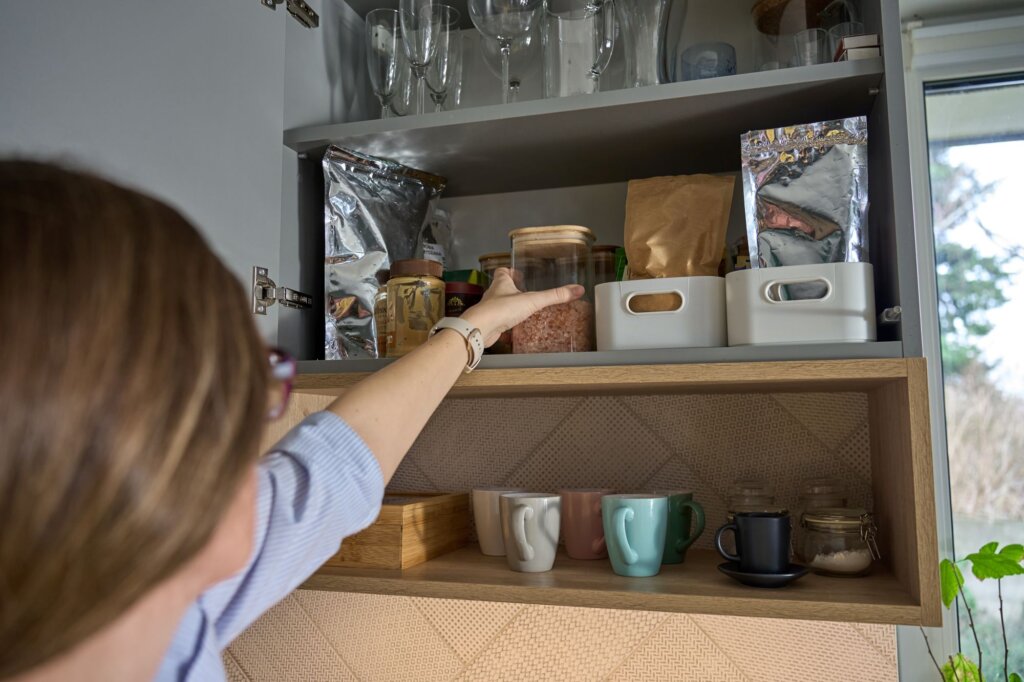Have you ever found a long-expired box of pasta shoved in the back of your pantry or bought something you already had because you couldn’t see it? Dealing with a cluttered or disorganized pantry can quickly lead to frustration, inefficiency, and wasted food. Luckily, with a little organization, you can create a pantry that’s easy to navigate, saves you time, and helps reduce food waste.
Step 1: Clear It Out & Take Inventory
When organizing anything, the first step is to take everything out and take note of what you already have. Check those expiration dates, toss anything that’s gone bad, and set aside items you won’t use (you can donate these later or give them away on your local Buy Nothing group). This crucial first step clears out the clutter and also helps you see what you need (or don’t need) to buy.

Step 2: Group Like Items Together
Once you’ve cleared out your pantry space and have taken stock of what you have, start grouping items together. This makes it easier to find what you need and can prevent duplicates from getting lost. Common pantry categories include:
- Baking supplies like flour, sugar, and baking soda
- Grains & dried pasta
- Canned goods
- Snacks
- Breakfast items like cereal or oatmeal
- Spices & seasonings
- Condiments & sauces
Step 3: Use Clear Containers & Labels
Using clear storage containers can transform your pantry in a few ways. Not only do they help keep your pantry neat, but you can also see what ingredients you have at a glance. For some items, they can keep ingredients fresh for longer. Go one step further by adding labels, which makes it easier to find what you need and helps family members put things back in the right place!
Step 4: Organize by Accessibility
Another good rule of thumb when organizing is to arrange items based on how often you use them. For everyday items like coffee, cereal, or snacks, place them in a spot that’s easy to grab. Bulk items can be stored on higher or lower shelves. Heavier items, like bags of flower or large bottles of water, should go on sturdy lower shelves. Kitchen appliances that you don’t use very frequently can be stored behind other items on the back of the shelf.
Tip: Tools like Lazy Susans or tiered shelves can be used to maximize space, especially for spices and canned goods!
Step 5: Create a System for Reducing Food Waste
An organized pantry, while it looks nice, can also work to prevent food waste. Try these strategies:
- Use the “First In, First Out” Rule – Place newer items behind older ones so you use what’s closest to expiration first.
- Check Before You Shop – Take a quick inventory before grocery shopping so you only buy what you need.
- Keep Snacks & Quick Meals Visible – If healthy snacks are easy to see, you’re more likely to reach for them instead of forgetting they exist.
Keeping your pantry organized can reduce stress in the kitchen and save you time and money. Plus, once your pantry is neatly arranged, keeping it organized becomes much easier!